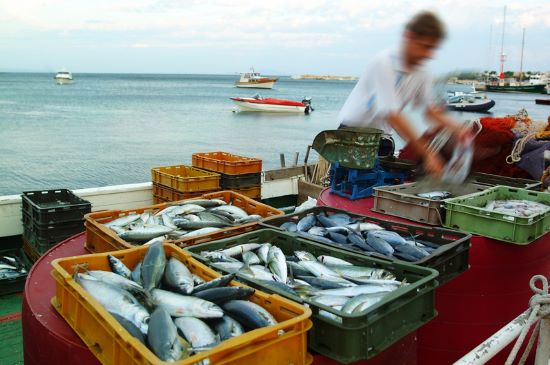Why would adult fish shrink in size? Several factors are in play.
- Evolution
- Human behaviour
- Climate change
Last September, a research article in the journal Science reported a study of body-size trends in plants and animals since 1960 using data from BioTIME. This global open-access biodiversity time-series database includes 361 studies from 374 contributors.
BioTIME data comes from terrestrial, freshwater and marine environments with a time range dating from before the Industrial Revolution to the present day. Most of the studies focus on areas of the planet undergoing rapid environmental change of which the oceans and freshwater environments of the world are two.
The article assessed body size changes in six species from 1960 to 2020. Within those species, the research looked at compositional changes and trends. The data showed that reduced body size within the general fish population was increasing in abundance.
Dino Grandoni of the Washington Post, who writes a column called Animalia, published an article describing what is happening to fish species around the world on May 4, 2024, entitled “Fish are shrinking around the world. Here’s why scientists are worried.” He writes “Fish are shrinking and no one can agree why.”
He describes research from the University of Massachusetts, Australia’s University of Tasmania and Deakin University, the University of British Columbia, and the U.K.’s University of York that confirm that smaller fish sizes have become widespread.
How does evolution play a role in fish size?
Fish evolve smaller adult body sizes because environmental pressures cause genetic traits to smallness emerge as dominant in the species gene pool. What environmental stresses are we talking about? Competition for less food is another. Predation is a second. A third is water temperature.
To compete for resources, smaller fish can be more successful in reaching their reproductive phase because they need less food, they can avoid being eaten by humans and other predators, and they can better adapt to warmer temperatures. Asta Audzijonyte at the University of Tasmania notes that the shrinking fish phenomenon is changing ecosystems because size is an environmental determiner.
How has human behaviour impacted adult fish size?
The polluting of fresh and saltwater sources has impacted fish enormously. The unknown future impacts of microplastics in the water on fish populations will play out in the next few decades. But, one surefire impact on fish is human overfishing. It is affecting the size of fish in the wild.
Fisheries harvest 200 million tons of fish annually with a decreasing amount coming from the wild. Aquaculture, the factory farming of fish, is from where the majority of the fish we eat today comes. Harvesting of wild fish is selective with only the larger ones caught. That in itself is leaving smaller fish behind. They are the survivors who spawn and pass along their genetic characteristics to offspring. Hence wild fish species are getting smaller.
Aquaculture is about turning fish into the water equivalent of chickens. It also, however, is about producing engineered superfish that grow faster and bigger. These DNA-enhanced species have yet to escape to interbreed with wild populations. So as of yet, their presence is not yet altering wild fish shrinkage trends.
What is climate change’s role in making fish smaller?
The atmosphere and oceans, rivers and lakes of the world are warming. This is the third likely cause to explain fish getting smaller. The reasoning goes as follows: Fish are cold-blooded meaning they do not regulate their body temperatures. The environment around them does. When water temperatures rise, a theory states that fish have an oxygen-absorption limit established by the area of their gill membranes. This gill oxygen limit theory could explain why the demand for oxygen in warming conditions doesn’t favour large fish. Whether the oxygen limit theory is right or not, scientists have observed consistently smaller fish in warmer waters when compared to those in colder environments.
Is there a positive to shrinking fish size?
University of York researcher, Inês Martins has observed that almost 75% of marine fish are getting smaller. She notes that there is a win to shrinking with many species increasing in numbers as average body size declines. Then there is the challenge for anglers who have to change their nets because where smaller fish predominate, they now can escape through the holes that are too big for humans to catch them.









